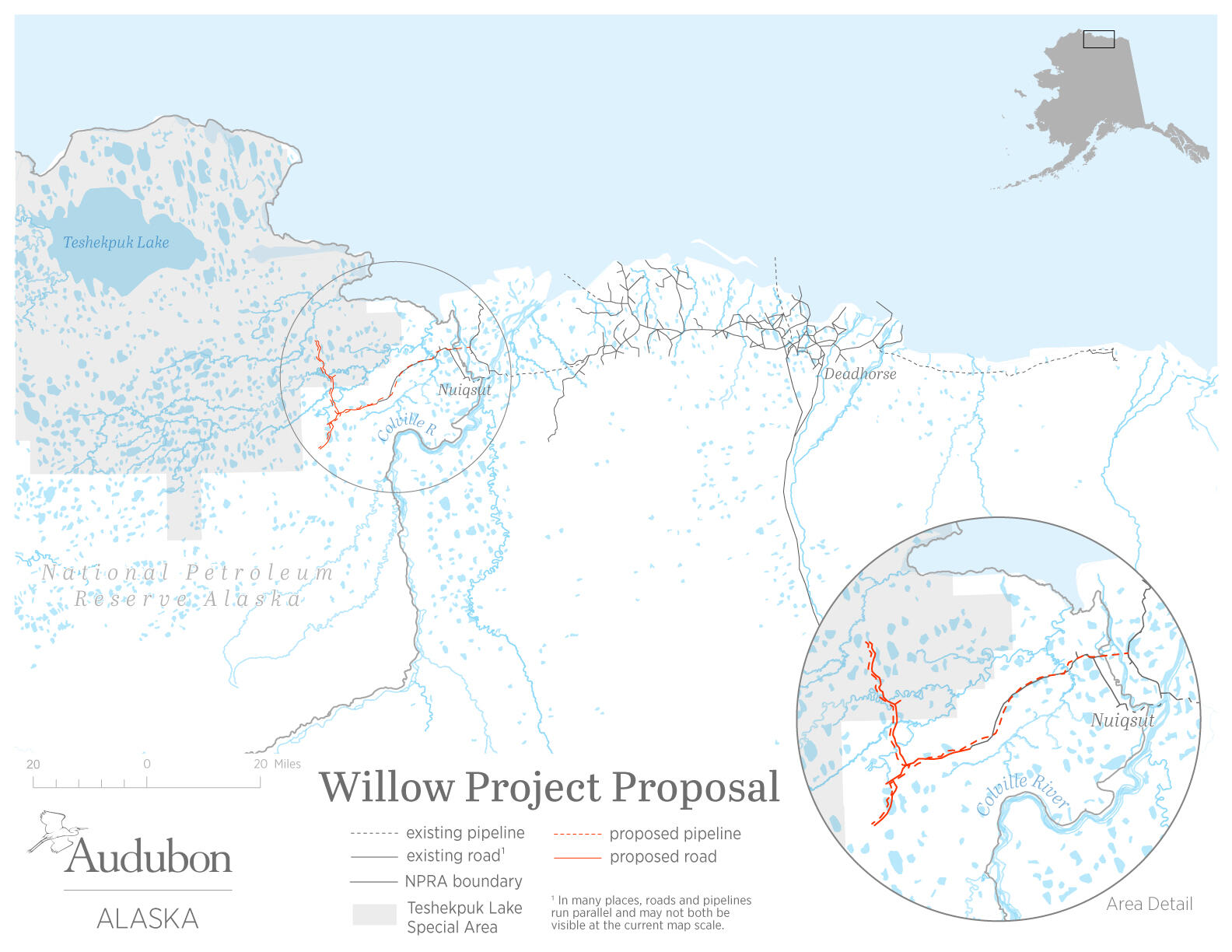The Teshekpuk Lake Special Area is under threat from a massive new oil field proposed by ConocoPhillips Alaska Incorporated. Known as the Willow project, this development would have detrimental impacts on the region’s ecological and cultural values, and the world’s climate.
Located in the northeast corner of the poorly named National Petroleum Reserve-Alaska, the Teshekpuk Lake Special Area is a wetlands complex of profound global importance. Millions of migratory birds travel to the region each year to nest, stage, and molt before dispersing throughout the world to overwinter. For decades, the lands and waters of this region have been safe from oil development. Willow, however, would be the first incursion into this designated area. Roads, for example, would inhibit the movement of wildlife, impact hydrologic functionality and permafrost integrity, and spread dust and invasive species, among a host of other impacts.
The Willow project was initially approved under the Trump Administration but two lawsuits challenged the project’s environmental analysis. In August 2021 the court found the approval to be illegal. Now, the government is gearing up to reanalyze the project’s design.
In addition to avian species of conservation concern, like the Yellow-billed Loon (Gavia adamsii), the project also presents significant risks to the Teshekpuk Caribou Herd. The smallest of the North Slope’s four herds, these animals calve, forage, and find necessary insect relief on the lands around Teshekpuk Lake. For the communities who live within and around the Reserve, these animals are vital to the region’s food security and culturally irreplaceable. It is likely that the Willow project will impact the herd’s seasonal movements and the energetics of individual animals.
Since the Trans-Alaska Pipeline was completed in 1977, oil pipelines and roads have metastasized across a vast area of Alaska’s North Slope. As proposed, the Willow project would be the latest westward expansion of this infrastructure. The project would involve up to five new drill pads, a massive new central processing facility, and a network of 40 miles of new roads and pipelines. While the true cumulative environmental effects of these types of developments are extremely hard to quantify, impacts will most certainly be significant and far-reaching. The effects of a rapidly changing climate will further compound this harmful industrial development.
Audubon has been committed to the protection and stewardship of the Teshekpuk Lake ecosystem for decades. Over the coming months, we plan to fully engage in all public processes and your support is incredibly important. Submit comments by March 9th via our Action Alert, check out our statement here and stay tuned for more.




